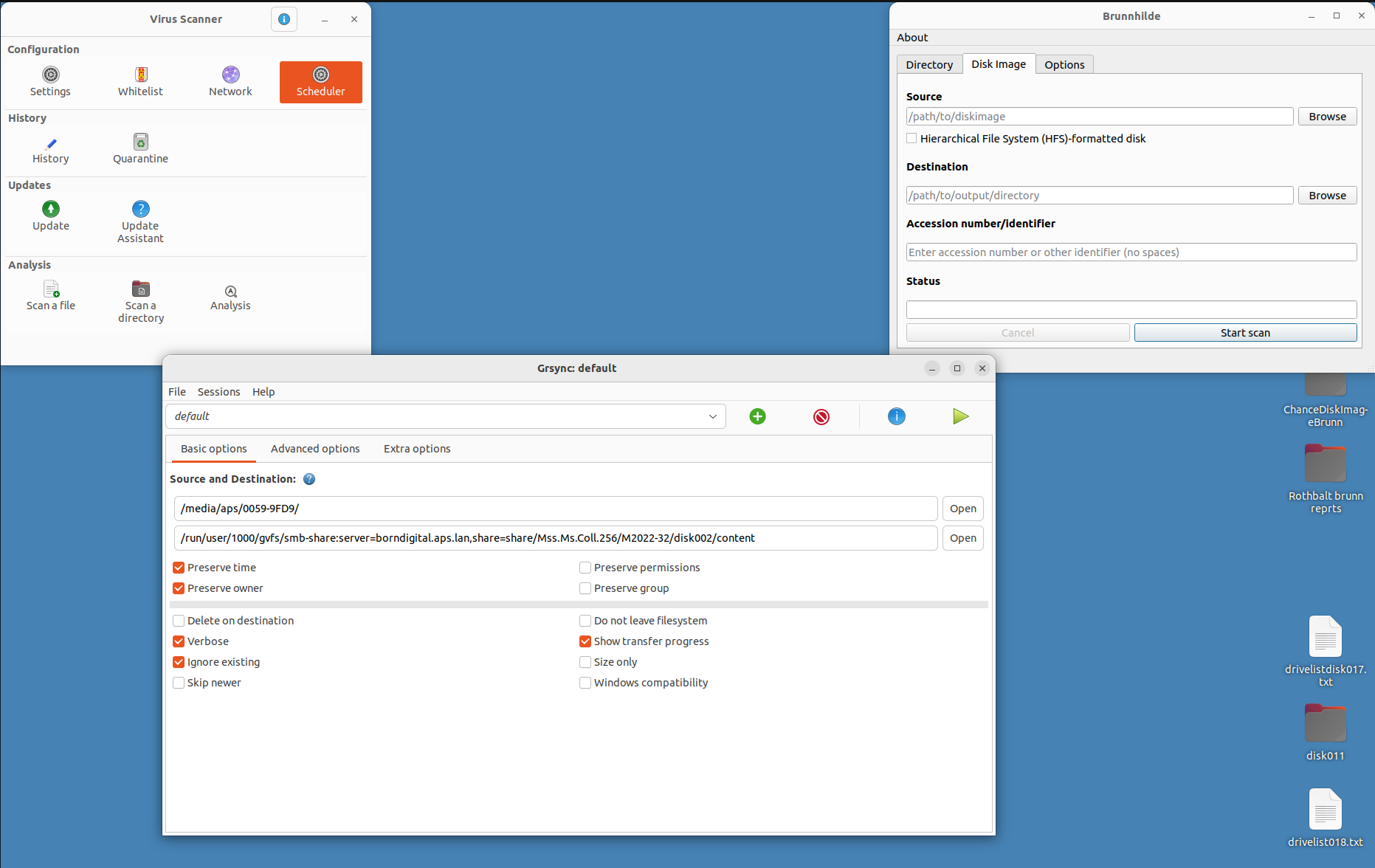Ingesting Britton Chance’s Born-Digital Materials
Header image: Two containers of born-digital carriers from the Britton Chance Papers and some of the external readers we use to transfer them.
The Society of American Archivists define born-digital materials as “records that originated from a computer environment” and can include materials found on CDs, external drives, floppy disks, zip disks, and even iPhones or whole computers. In a survey conducted in 2019, APS staff found that the collection contains over 3,940 physical “disks” —a term that covers multiple physical formats— which contain over 6.9 terabytes of information. One of my first major projects was to go through the born-digital materials in the Britton Chance Papers, one of the largest collections at the APS, start transferring the born-digital materials to APS’s server, and begin the process of making them available to researchers.
Like physical archival materials, born-digital items need to be processed before they are ready for research. However, they require an additional pre-processing step called ingesting. First, all the disks in a collection are located, labeled, and inventoried and then connected via an external drive to be scanned for viruses. If no threats are detected, the files are transferred either by creating a disk imaging (for more complex or actively used disks) or a logical copy (for less complex files, similar to copy/paste). After the files are successfully transferred, we run digital forensics reports using an application called Brunnhilde —named after the valkyrie— as she guards the APS’s digital Valhalla.

When it comes to transferring files, one has to consider that these disks are not indestructible and are easily damaged or corrupted over time. Many issues arise that can pause or stop the process in its tracks. First, it is not uncommon to come across disks that can’t be read due to damage, bit rot, or the external reader itself. Even when they can be read there are risks of outdated formats, data interpretation issues, attachments that cannot be transferred, and viruses.
A collection of ZIP discs found in the Chance Papers is the perfect example of these potential hurdles. Several of the ZIP discs contained Trojan viruses, which had to be quarantined and dealt with separately so as to not compromise the safety of our servers. In addition, the disks seemed to be entire backups of Chance’s computers, meaning that there could easily be thousands of files, containing many of the data integrity issues mentioned above. Needless to say, it was rare that a ZIP disks could be successfully transferred on the first go.
This process will be applied to all disks found within APS collections in an effort to retrieve the information needed for researchers to do their work. Once the files and their respective information are on our server, we can move to more familiar archival processing. All done digitally of course.


